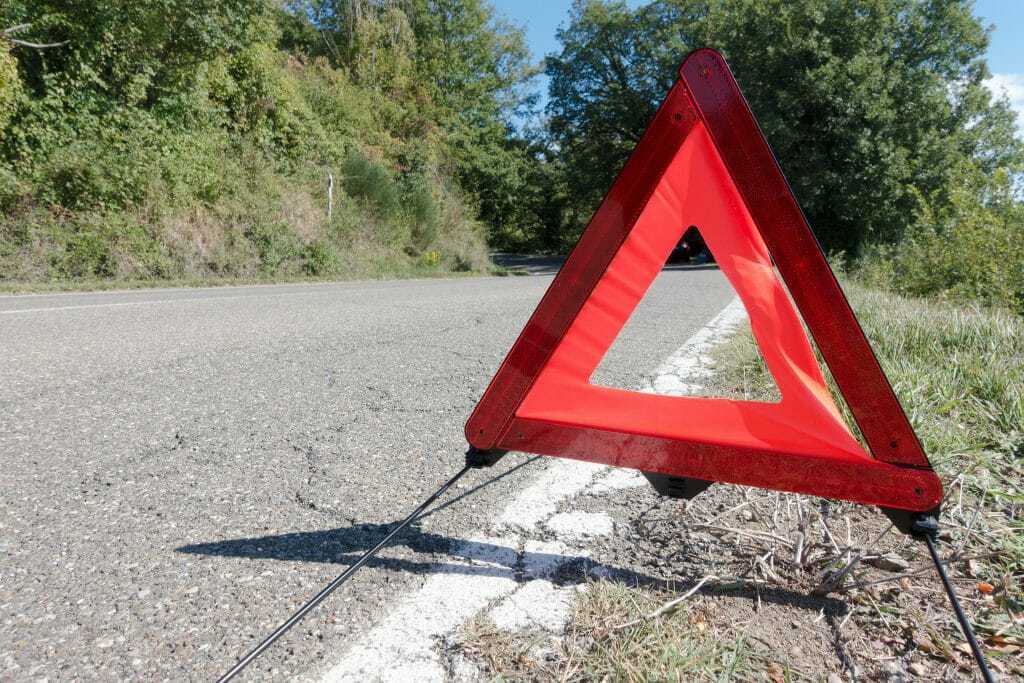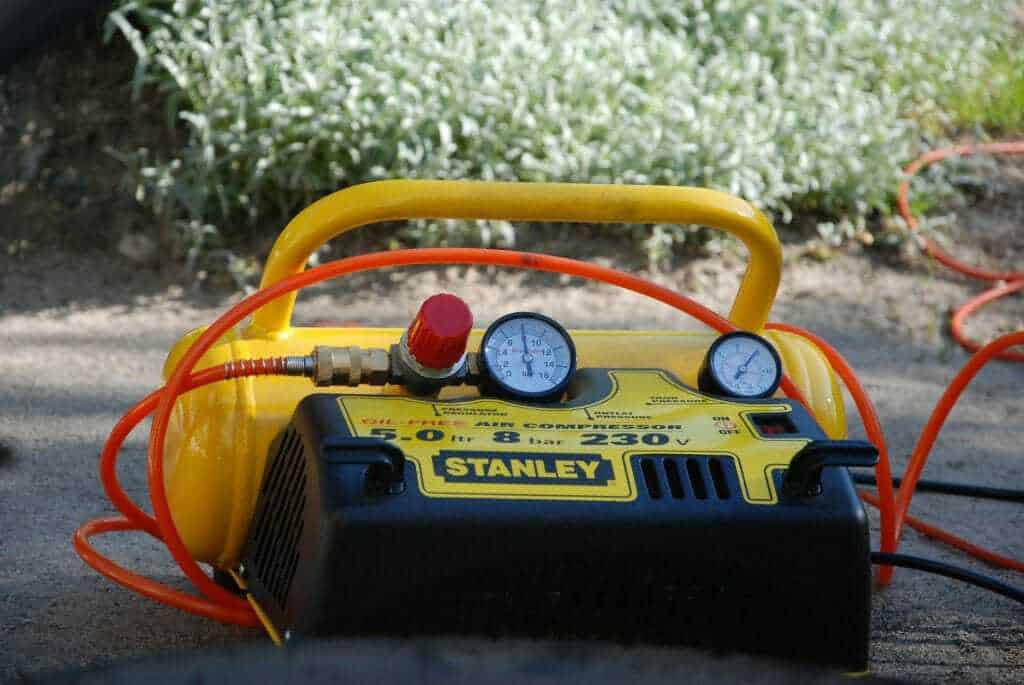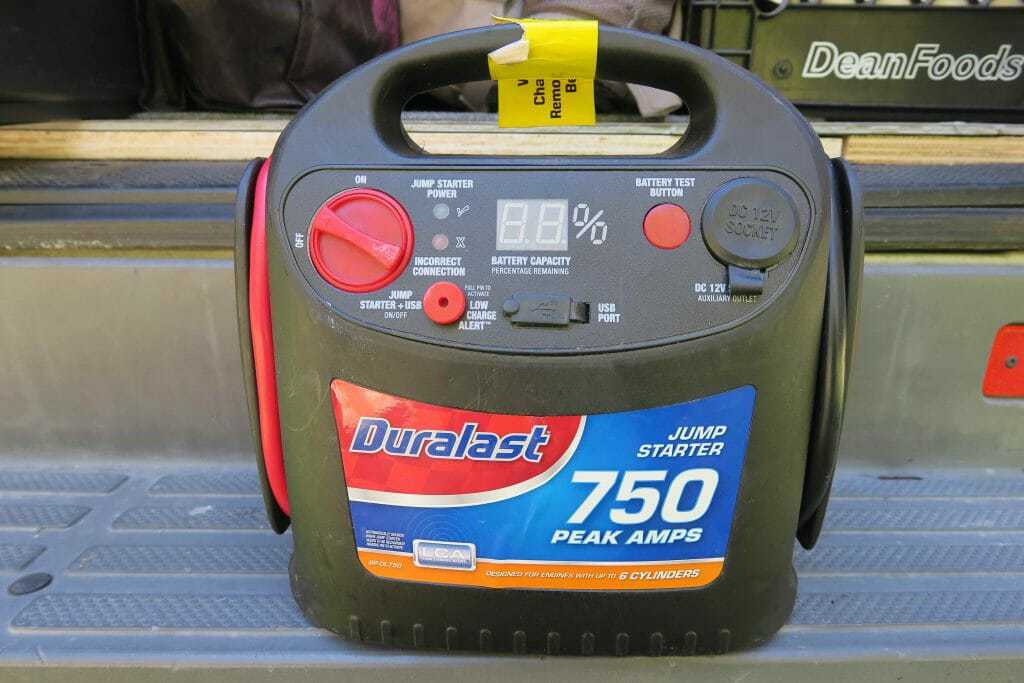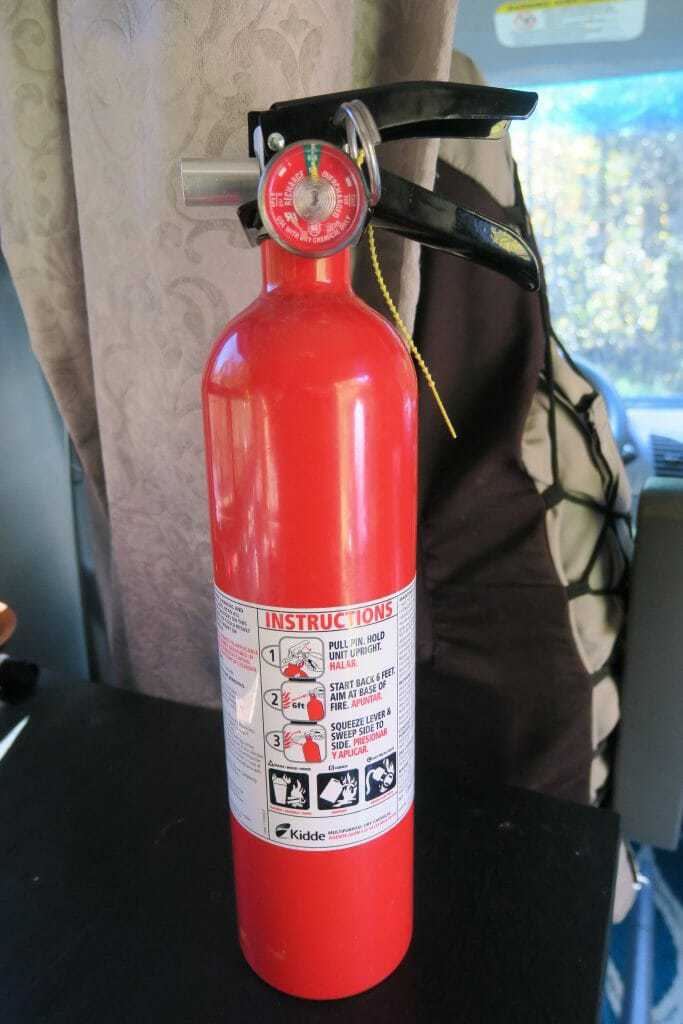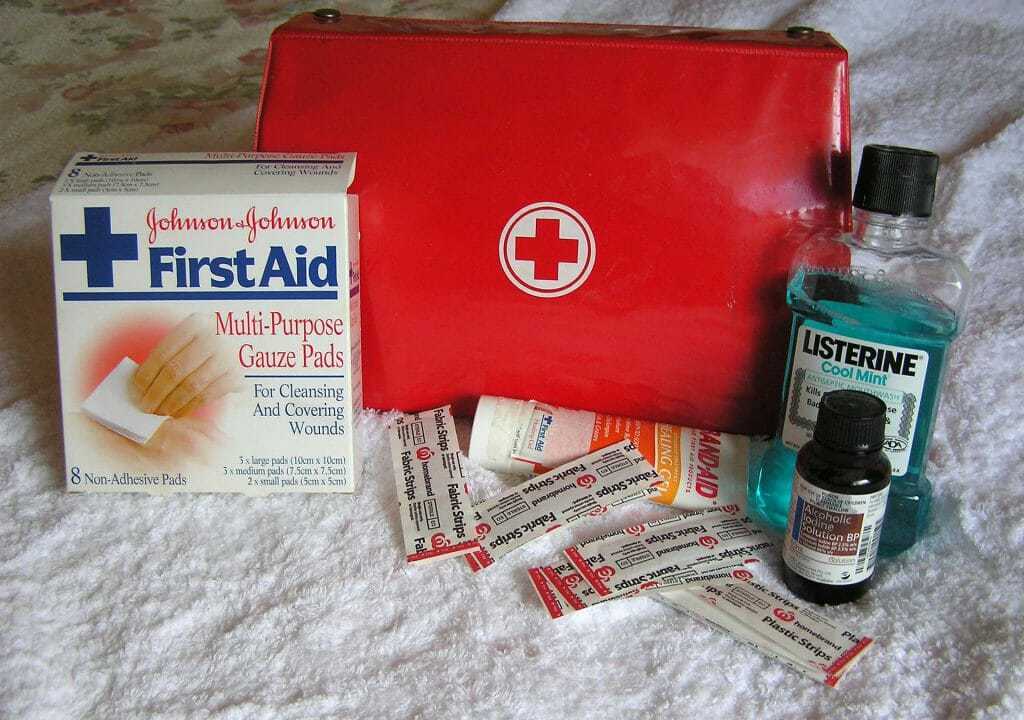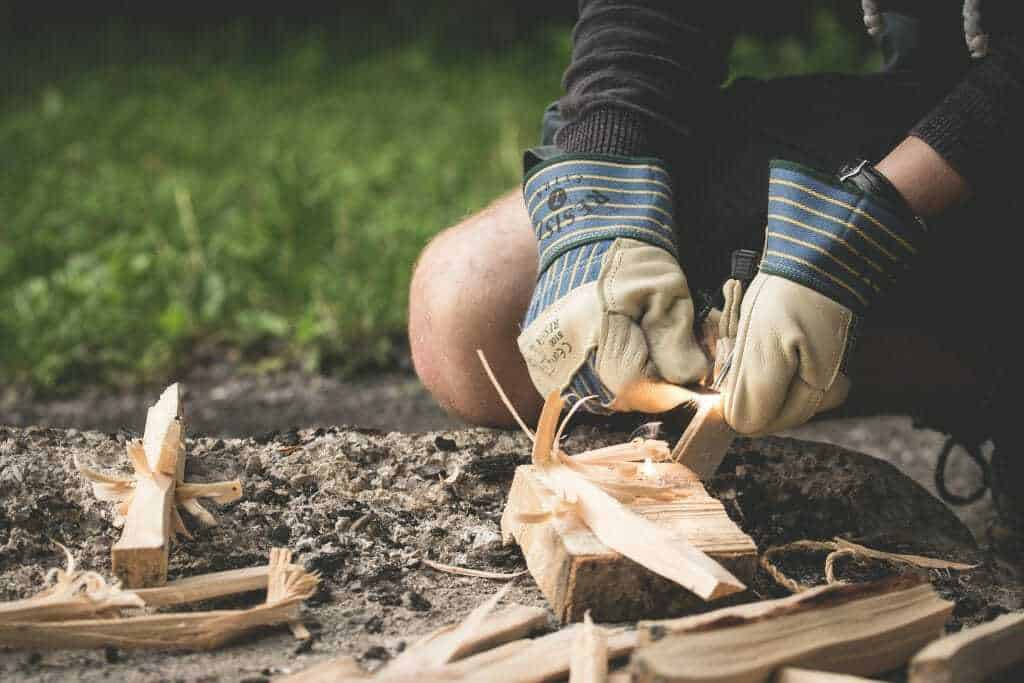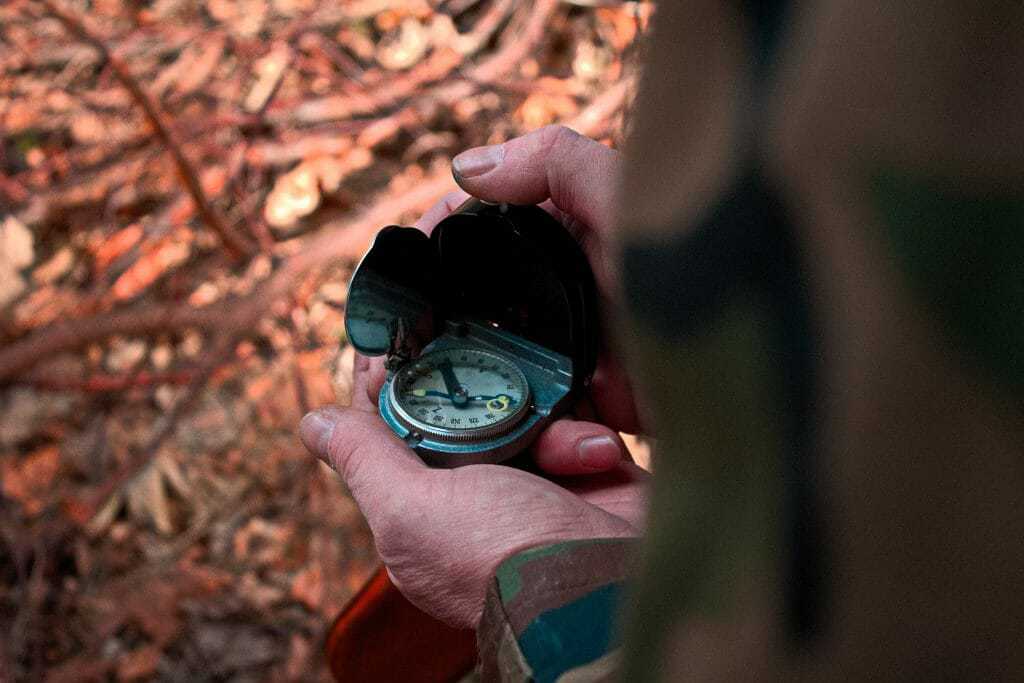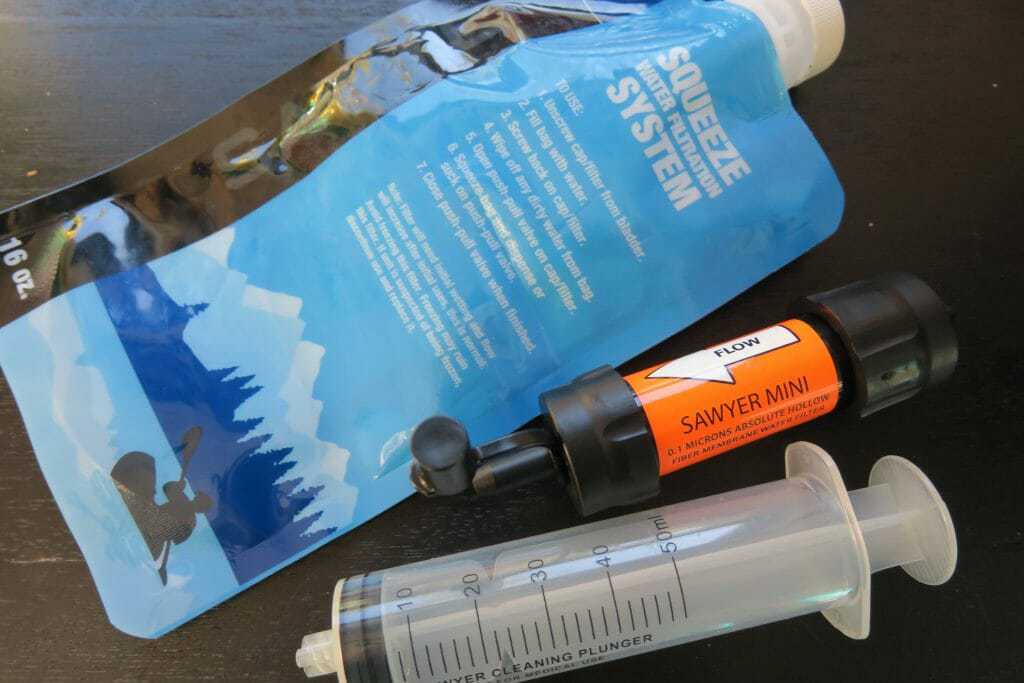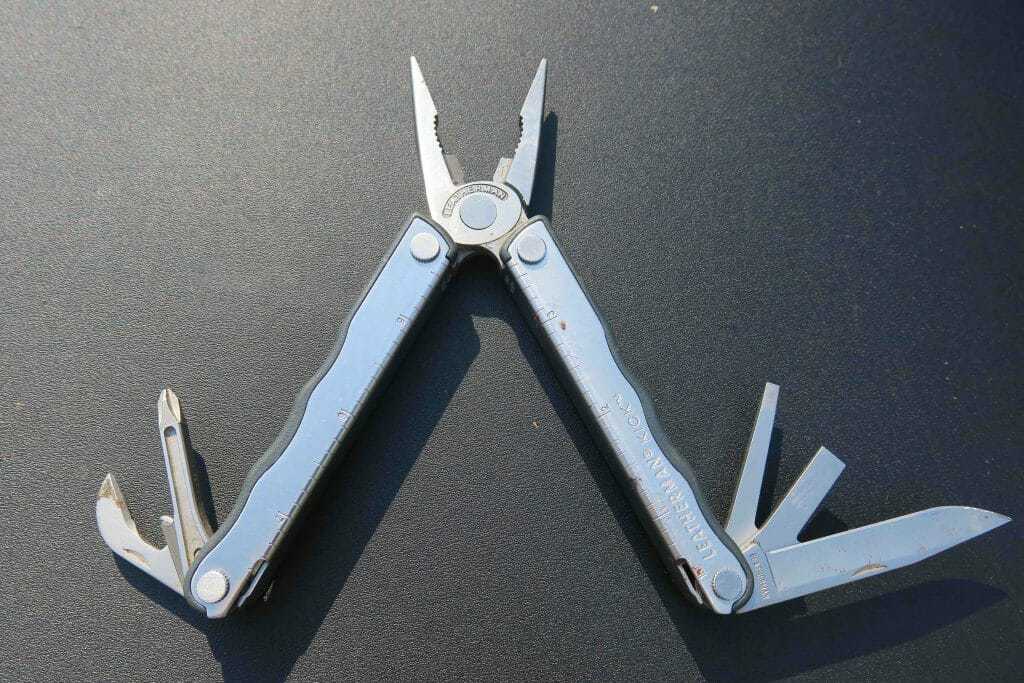Every RV owner knows the importance of having survival essentials like extra batteries, non-perishable food, and an emergency water supply onboard, but what other emergency items are you forgetting?
RVing, while a wonderful way to explore and experience freedom, unfortunately opens you up to more possible emergencies than you would’ve experienced at home. It’s important to be prepared for all the roadside, medical, or survival mishaps that could happen when you’re traveling with an RV.
This list of 25 emergency preparedness items that every RV must have will make sure that you’re set up for success on the road. I compiled most of this list from my own experience as a full-time RVer, as many of the items below have gotten us out of a scrape or two. With the right preparation, they can do the same for you.
1. Warning triangles
Warning triangles warn other motorists that you’re pulled over.
At some point, every RV owner will find themselves pulling over on the side of the road. Whether it’s because of a breakdown or a flat tire, make sure your roadside emergency doesn’t turn into a medical emergency.
Warning triangles are high visibility markers that alert other motorists to your RV’s presence and help prevent accidents while you’re tending to your vehicle. They come in a pack of three, collapse down for easy storage, but are heavy enough to withstand windy conditions. Some states require that RV owners either carry warning triangles or flares; check this list to find safety requirements by state.
These DOT approved warning triangles are the highest-rated triangles available. Before using them, check out the tips in this article for where to place the triangles in relation to your RV.
2. Flares
An alternative to carrying warning triangles is to buy flares. However, keep in mind that traditional flares are banned in some states because they are fire hazards.
Instead, consider getting a battery-powered LED set like this one. At night, they’re just as bright as traditional flares, but they’re also reflective in the daytime. Overall, they’re the most cost-effective option to have on hand.
3. Tow straps
Tow straps are a must for getting unstuck from sand, mud, or other sticky situations. Under no circumstances should you leave home without this vital piece of equipment.
Shortly after we began our RV lifestyle, our class B camper van got stuck in a sandy patch while we were at a boondocking spot. We were lucky that the first person to stumble upon us happened to have a length of chain in the bed of his truck. With some improvisation and the help of our tow hitch, we made do with the chain (note that this isn’t recommended, as chains are known to cause deadly towing accidents).
Don’t make the same mistake we did. It’s up to the RV owner to have the equipment needed on hand. Go ahead and buy your tow straps now – before you need them.
These straps from RHINO USA are the highest-rated and have a break strength of over 30,000 lbs. You’ll also need to buy D-ring shackles and a shackle hitch receiver, but the complete set-up should cost you less than $100.
4. Traction mats
Is there no one around who can tow your RV out of a sticky spot? That’s what traction mats are for. These durable mats slip under the stuck wheel and give you the traction needed to drive out of sand, snow, mud, and more.
Traction mats are also much more inexpensive than a tow strap set-up. These mats from Stalwart are designed to work with RVs and will hardly touch your budget.
5. Tire chains
Snow chains will help your RV tackle icy conditions.
If ski slopes and winter adventures are in your future, then you’ll likely need to invest in a few tire chains for your RV. Tire chains give you traction on icy roads and can prevent sliding. In some states or areas they’re even mandatory during certain times of the year.
Even if you don’t plan to use them, chains are excellent to have on hand for unexpected weather conditions. You don’t want to get caught in a sudden winter storm without this peace of mind in your toolbox.
There are several things to consider before choosing the right chains for your RV. Consult this guide to picking out snow chains before you start shopping around.
6. Portable air compressor
An air compressor is another useful tool to help get you unstuck.
Another option for gaining traction in stuck places is to let some of the air out of your tires, then drive out of the tough spot. Of course, you’ll need an air compressor to refill your tires once you’re free.
An air compressor is also a must-have for those moments when you have a flat from a punctured tire. Once you plug the hole with a tire plug kit (which happens to be #8 on this list), get your tire back up to the correct pressure with an air compressor.
We love this air compressor and jump starter combo from STANLEY Tools. Given its dual functionality and power, the price is extremely reasonable. Many RV owners also report similar success and satisfaction.
7. Tire pressure gauge
If you own a car, my guess is that you already have one of these handy devices rattling around your glove box or tool kit. You might already have one in your RV. Use it to make sure that your tires are inflated to the pressure recommended by your RV’s manufacturer.
If you’re the sort of person who forgets to routinely check your tire pressure or would prefer to keep a closer eye on what’s happening with your tires, a tire pressure monitoring system is one of our top ten RV essentials.
This tire pressure monitoring system from TireMinder can monitor up to five tires using a convenient and compact transmitter system. It’ll prevent a blow-out that could end up costing you thousands of dollars in damage.
8. Tire ramp or jack
Changing a flat tire on an RV is not much different from changing a tire on a car or truck. However, you probably need a different way of lifting your RV than what you use on your daily driver.
Some travel trailer owners will need to use a tire ramp. Check out the video below to see how this roadside essential works.
<iframe width=”560″ height=”315″ src=”https://www.youtube.com/embed/755hmEWAW_c” frameborder=”0″ allow=”accelerometer; autoplay; encrypted-media; gyroscope; picture-in-picture” allowfullscreen></iframe>
If you like what you see, here’s where you can order the same ramp featured in the video.
Another option is to use a jack. When choosing the right jack for your needs, make sure it’s rated to bear the weight of your RV. Many RV owners prefer to use a hydraulic bottle jack like this one.
9. Tire plug kit
A tire plug kit can save you the hassle and money of relying on a mechanic to repair a small puncture.
Having a tire plug kit on hand has made my day more than once in the past few years. This small and inexpensive kit can plug a punctured tire in a snap. It’s simple to use and the money you’ll save on buying a new tire or paying a mechanic to fix it for you will put a smile on your face. It’s one of the staples in our camper van’s emergency roadside kit.
Never used a tire plug kit before? One of the leading manufacturers provides some straightforward instructions, but if you want a more in-depth explanation, check out this guide.
There are big (and more expensive) kits on the market, but I use this simple set-up from Slime and a pair of pliers.
10. Jumper cables
There’s no excuse for not owning a pair of inexpensive jumper cables.
No one likes having to jump-start a battery, but the day will probably come when you have to. Aside from having the best RV battery under your hood, make sure that you have a set of decent jumper cables. You don’t want to be that person who asks someone for a jump and if they have jumper cables.
Don’t be caught without this inexpensive essential. You can’t go wrong with these tried and true cables from Cartman.
11. Jump starter
A jump starter can give your battery the juice it needs even when there’s no one around.
If you love boondocking as much as we do, then you’ll want to invest in a jump starter. When you’re far from established campgrounds and crowds, jumper cables are useless if there aren’t any other vehicles around to connect them to.
Aside from getting you up and running without the help of someone else’s battery, many jump starters also give you an extra source of power if you need to charge something like a cell phone or other USB device.
This jump starter from NOCO is almost universally beloved. Be sure to check that the model you buy fits the size of your engine.
12. Tool kit
A decent all-purpose tool kit can get you out of many jams.
One of the best ways to deal with mechanical issues or roadside emergencies is to become familiar with the workings of your RV before something goes wrong. A comprehensive tool kit can empower you to tackle different maintenance projects and understand the ins and outs of your rig so that when something does happen out on the road, you’re prepared to understand and deal with the problem.
In addition to essentials such as pliers, a hammer, and screwdrivers, we carry sockets that we know work well with our Sprinter van. We love having the confidence that anything we need to work on our RV is already on board. Consider carrying a tool kit like this one from DEKOPRO, which has a range of the most common tools you need.
13. Window breaker and seat belt cutter
While the likelihood that you’ll ever have to use a window breaker and seat belt cutter is hopefully slim to none, the slim-to-none price tag of this life-saving device makes it well worth getting. Two come in this pack, so you can stick one in your RV and one in your daily driver.
14. Fire extinguisher
While you’ll hopefully never have to use it, a fire extinguisher is one of the most important pieces of safety equipment you can own.
Whether you’re cooking with propane, building a campfire, or repairing some electrical wiring in your RV, there are countless ways a daily task can turn into a life-threatening emergency. You’ll be glad to have a fire extinguisher in easy reach if that happens. Many states require that your RV has one.
We carry an A-B-C class fire extinguisher just like this model from Kidde, so it can tackle fires caused by combustibles like wood and paper, flammable liquids like grease or fuel, and electricity. This covers all of the different fires that are likely to occur in and around an RV.
For more information about the types of fire extinguishers, check out this guide from Nationwide Insurance.
15. First aid kit
A first aid kit is an essential item for dealing with minor medical emergencies.
First aid kits usually only get used for bumps, bruises, and minor aches, but having a comprehensive one onboard offers comfort and peace of mind. You never know what kind of medicine or equipment you’ll need until you need it. Take the guesswork out of assembling your own first aid kit and buy this all-purpose model.
16. First aid pocket guide
A first aid kit is only good if you know how to use it, and unfortunately, many well-intentioned Samaritans who administer first aid might make dangerous mistakes.
During my own advanced-level first aid training, I was surprised to learn about all the common errors that can make a medical emergency even worse. In some situations, it’s better to keep an afflicted person comfortable than offer any kind of care before first responders arrive.
So how do you know when to help and what kind of help to offer? A first aid pocket guide like this one can give you quick directions when you need it most. The tabbed pages make it easy to flip to the right page at the right time, and it’s small enough to tuck right into your kit.
17. Survival pocket guide
If you take your RV boondocking far from civilization, if you often go hiking, or even if you find yourself in a bug-out situation, then it pays to brush up on basic outdoor survival skills. This pocket guide is small enough to toss in your hiking pack and covers foundational knowledge such as how to start a fire, finding water, and how to deal with hypothermia.
Even if you don’t keep a guide with you, consider reviewing these critical survival techniques.
18. Fire starter
Being able to start a fire can mean the difference between life and death when stranded far from help.
We all love our lighters and fuel for quickly and easily starting a fire, but you should also have a fuel-free fire starter on hand for emergencies. If you find yourself stranded and you’ve run out of fuel for your RV heater or stove, then you need an alternative way to cook and stay warm.
One of the most fool-proof fire starters available is based on the primitive method of striking flint with steel, creating a spark that starts a fire. This model made with magnesium is one of the best sellers. Plus, it includes a compass (#19 on this list) an emergency whistle (#22 on this list) for a multi-purpose survival tool.
19. Compass
A compass will prevent you from going in circles when trying to find your way out of the woods.
In a situation where you need to walk out of a place and search for help, you’ll want a compass for when your GPS dies or your cell phone goes out of range. Even if you’re not trained in orienteering or have never used a compass before, it can still prevent you from walking in circles. Consider getting a compass like this one, which is attached to a paracord survival bracelet and includes a handy flashlight.
20. Hand crank flashlight
If you get into a situation where you run out of spare batteries, a hand crank flashlight can continue to provide worry-free lighting. These days, hand crank flashlights also come with a solar panel on it so you can charge them without having to work for it. This model includes a radio and can even charge your cell phone.
21. Solar charger
Having a decent solar set-up on your RV can provide you with limitless power no matter how long you stay off-grid. If you become stranded, you’ll still be able to power your electronics such as a cell phone, which will be instrumental in helping you find your way out and communicate with authorities.
If your RV doesn’t have a solar set-up, consider getting a solar charger so you can charge your phone no matter the circumstances. This solar charger attaches to the back of a day pack so you always have power on hand, no matter how far you stray from your RV.
22. Survival whistle
If you become stranded while boondocking or camping in the backcountry, a survival whistle can alert search and rescue teams to your presence while also sparing your lungs and voice box. Survival whistles are cheap and often come with several in a pack. This one is inexpensive, durable, and can be heard from over a mile away.
23. Water purification kit
A water purification kit can keep you comfortable on a long hike or even save your life.
Many hiking enthusiasts will already own some method of water purification. Whether you use tablets, a filter, or a sterilization pen, a water purification kit can eliminate most common contaminants and make water safe to drink.
In addition to employing some of these techniques for water conservation, RVers who like to go camping off-grid should have their water purification method of choice on hand for emergencies. I’ve used a simple and affordable filter from Sawyer for the past few years and have always been happy with it.
24. Emergency food bar
An emergency food bar contains enough calories and essential nutrients for one adult for three days. It’s handy to have around in case you become stranded while boondocking and deplete your pantry supplies. This bar is highly rated and comes in cinnamon and coconut flavors.
If you can’t stomach the idea of resorting to an emergency food bar, considering having a system in place for growing your own food in your RV. Having fresh produce on hand, aside from enriching your meals on a normal day, can also make you more comfortable during a survival emergency.
25. Multi-tool knife
A multi-tool should always be in your pack when venturing far from your usual tool kit.
When packing your bag for a day hike away from the RV, don’t forget to toss a multi-tool in with your water and snacks. Having the best of your tool kit in one pocket-sized item is indispensable, especially during medical or survival emergencies in the backcountry.
Check out our guide on the best multi-tools available. If you prefer something more minimalist, consider choosing one of these survival knives instead. I personally carry a multi-tool from Leatherman like this one.
